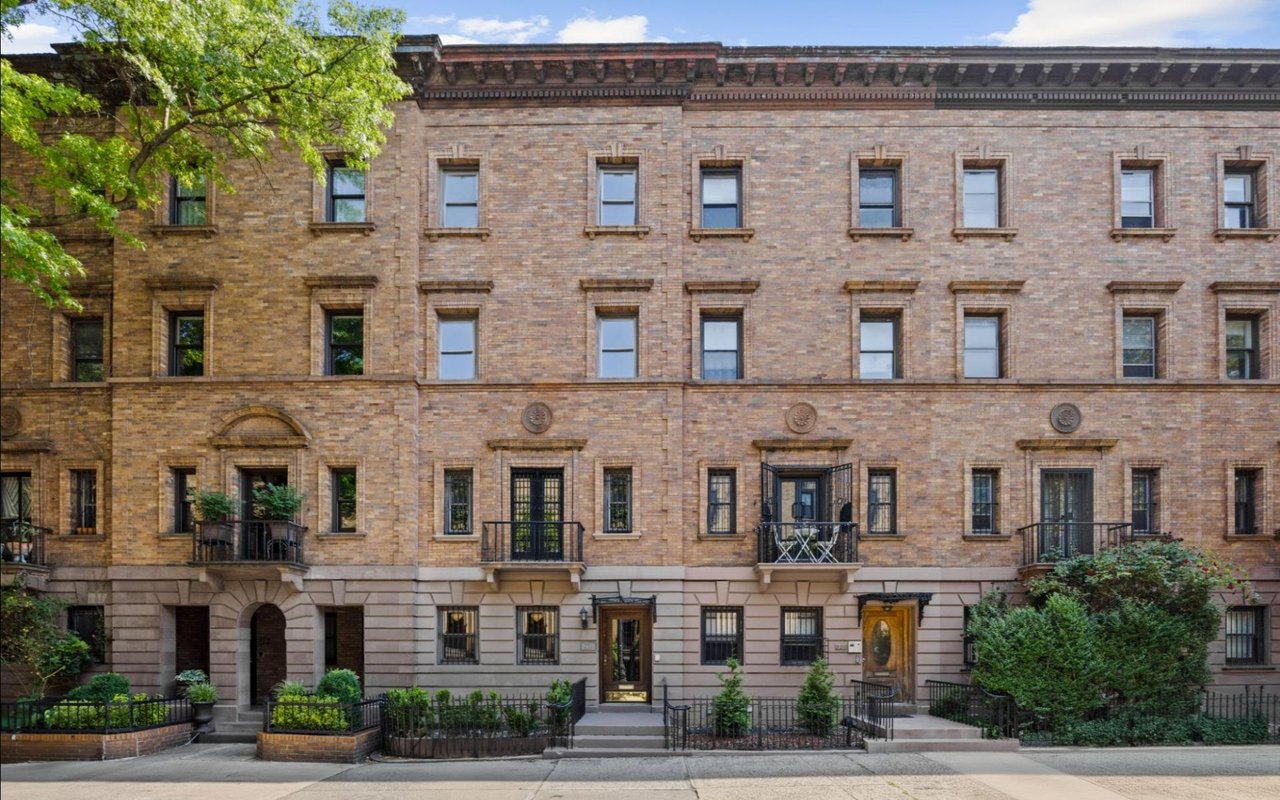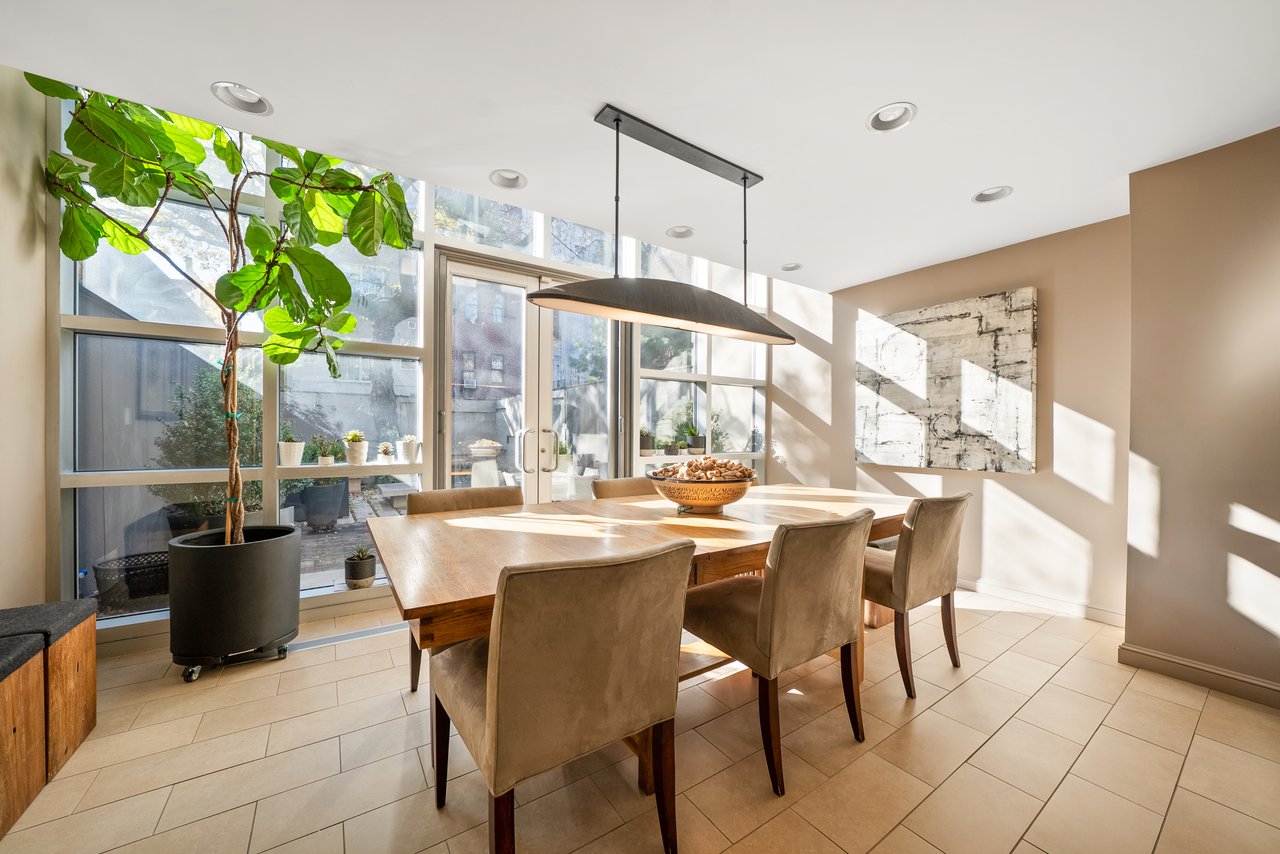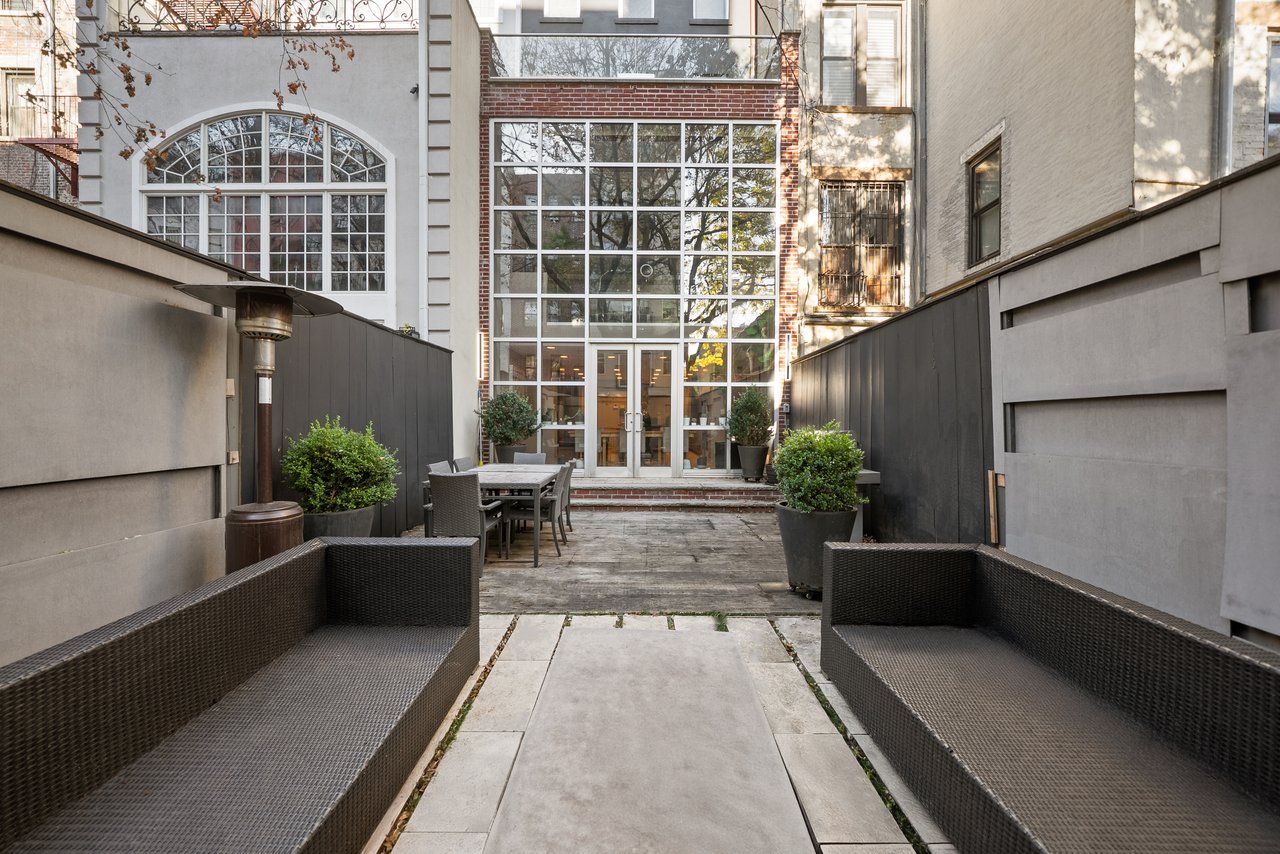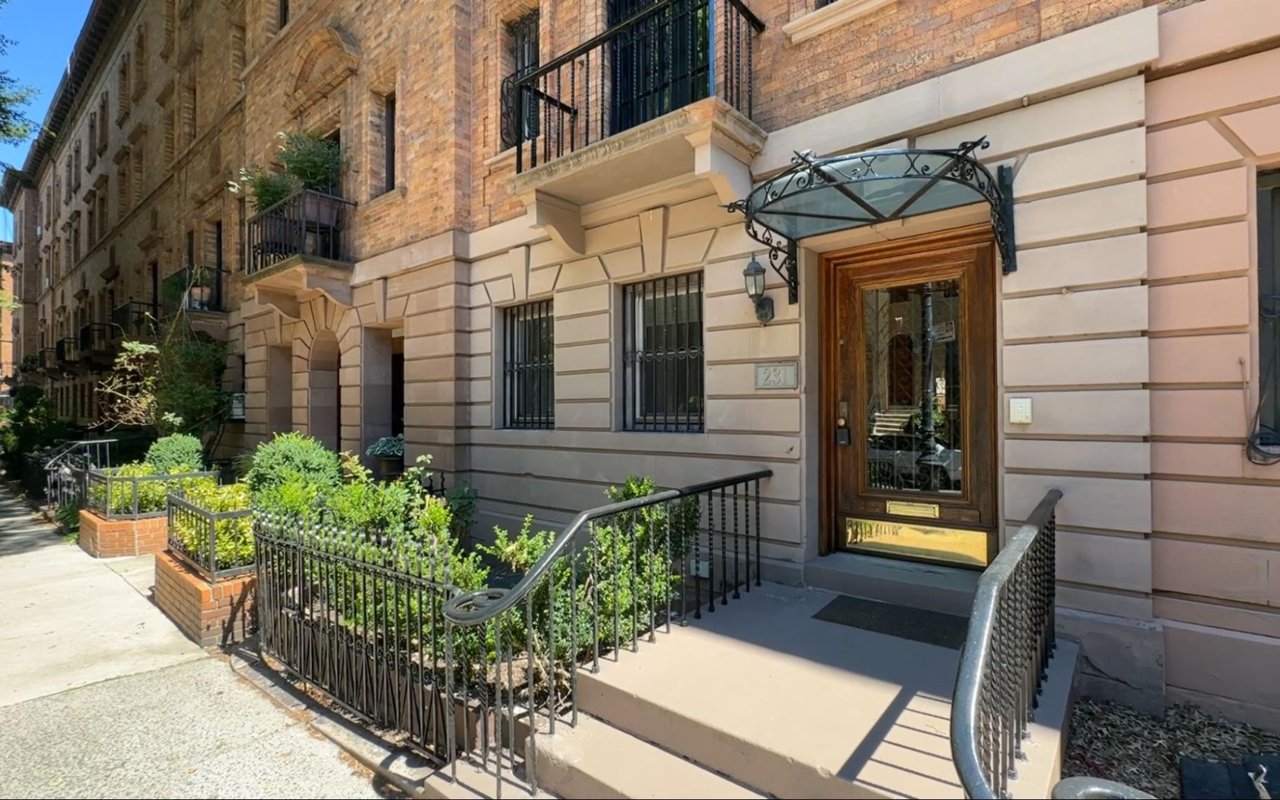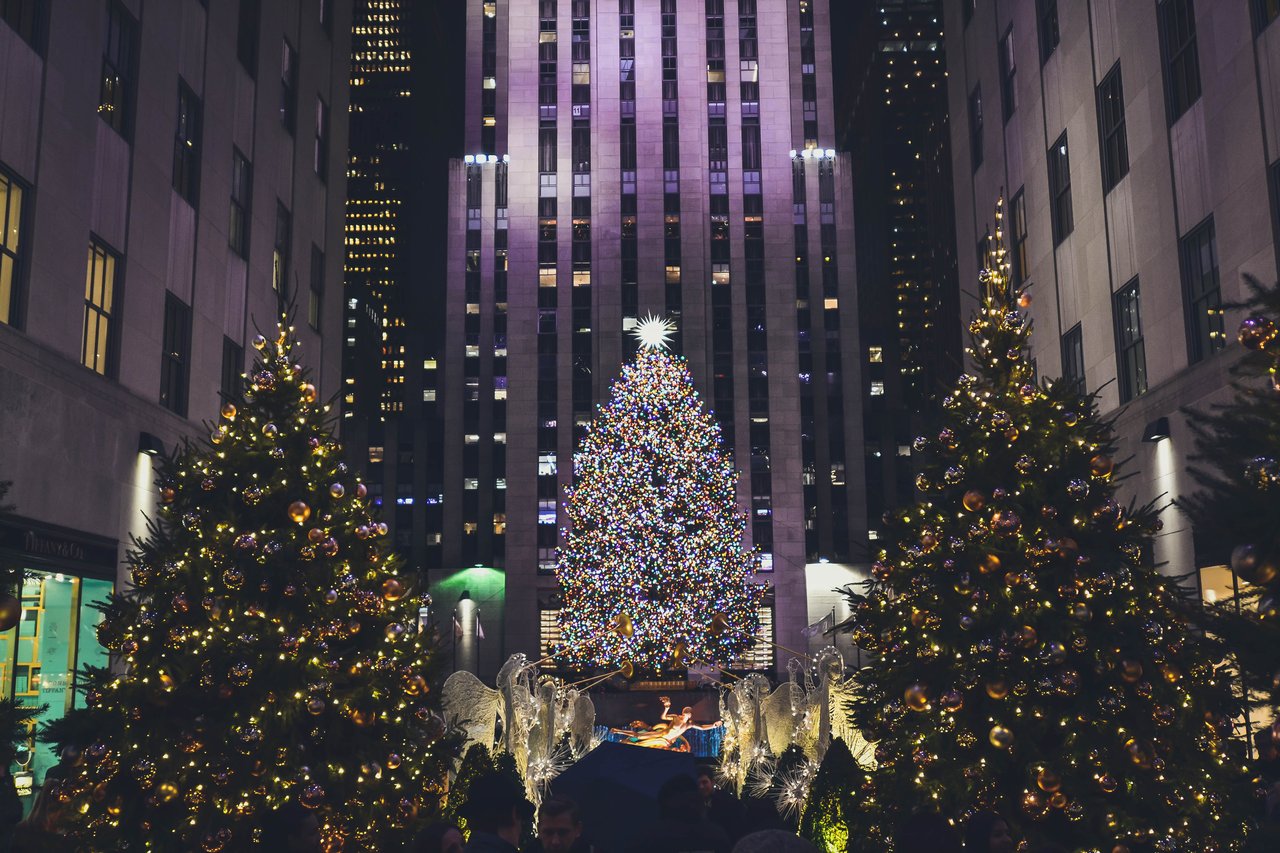In Harlem, New York City, history resonates in every street and building. Beyond its vibrant cultural tapestry and energetic community, Harlem's architectural heritage is extraordinary, showcasing a blend of styles that tell the story of its evolution from rural enclave to a global cultural beacon. Exploring the Harlem NYC architecture is like walking through a living museum, each structure whispering tales of the past.
The neighborhood's iconic brownstones, grand churches, and distinctive residential blocks are not just buildings but architectural landmarks that embody different eras of development and significant cultural shifts. This guide will take you through some of Harlem's most noteworthy architectural gems, highlighting the unique details that make them stand out.
The Iconic Harlem Brownstone
When I think of Harlem NYC architecture, the brownstone immediately comes to mind. These row houses, clad with a reddish-brown sandstone, are synonymous with urban living and form a significant part of New York City's residential landscape. While found across Manhattan, Brooklyn, and the Bronx, Harlem boasts numerous blocks embellished with impeccable rows of these ornate structures.
Erected from the 1840s onward, often in Italianate or Neo-Grec styles, brownstones are characterized by their signature high stoops – long flights of steps leading to the main entry on the parlor floor. This parlor floor often boasts impressive ceiling heights, sometimes 12-14 feet. Beyond the stoops, you'll find elegant ornamentation like wrought-iron railings, decorative cornices, and bay windows. Inside, original features like dramatic winding staircases, ornate woodwork, marble fireplaces, and plaster medallions under high ceilings speak to their age-old lineage.
Erected from the 1840s onward, often in Italianate or Neo-Grec styles, brownstones are characterized by their signature high stoops – long flights of steps leading to the main entry on the parlor floor. This parlor floor often boasts impressive ceiling heights, sometimes 12-14 feet. Beyond the stoops, you'll find elegant ornamentation like wrought-iron railings, decorative cornices, and bay windows. Inside, original features like dramatic winding staircases, ornate woodwork, marble fireplaces, and plaster medallions under high ceilings speak to their age-old lineage.
Strivers' Row (St. Nicholas Historic District)
Known officially as the St. Nicholas Historic District, but affectionately called "Strivers' Row," this landmark-designated site comprises three rows of elegant townhouses on West 138th and West 139th Streets. Built between 1891 and 1893, these homes were initially designed for upper-middle-class white families before becoming a prestigious address for successful African American professionals ("strivers") in the early 20th century.
The architecture here is truly a collective gem, with different architects designing each of the three rows, resulting in a fascinating blend of styles including Georgian Revival, Neo-Italian Renaissance, and Romanesque Revival. A unique design element is their back-to-back configuration, sharing rear courtyards, with narrow alleyways between them that were once used for discrete horse stabling and deliveries. Some entrance gates still bear signs that read "Walk Your Horses," a charming historical detail. The meticulously restored facades, often featuring intricate brickwork, stone details, and decorative ironwork, reflect the pride of both their original owners and current occupants.
The architecture here is truly a collective gem, with different architects designing each of the three rows, resulting in a fascinating blend of styles including Georgian Revival, Neo-Italian Renaissance, and Romanesque Revival. A unique design element is their back-to-back configuration, sharing rear courtyards, with narrow alleyways between them that were once used for discrete horse stabling and deliveries. Some entrance gates still bear signs that read "Walk Your Horses," a charming historical detail. The meticulously restored facades, often featuring intricate brickwork, stone details, and decorative ironwork, reflect the pride of both their original owners and current occupants.
The Apollo Theater
The Apollo Theater on 125th Street is a landmark of Harlem NYC architecture and a global icon of African American music and entertainment history. Initially built in 1913 as a burlesque theater, its architectural journey reflects Harlem's transformation. As of 2025, it was undergoing a $65 million renovation—the first in its history—expected to take about a year to complete. Still, you can walk by and admire the iconic marquee, long recognized as a global symbol of Harlem.
Designed by a prominent architect, George Keister, its exterior features a distinctive Beaux-Arts style with intricate detailing. While its architecture is noteworthy, the true grandeur of the Apollo lies in its legendary stage, which has hosted countless luminaries, from Duke Ellington and James Brown to Michael Jackson. Amateur Night is always a crowd-pleaser—especially for our friend who proudly (and frequently) reminds us he took home the dance contest trophy in his late 50s. Its enduring presence and cultural significance far transcend its brick-and-mortar façade, making it a living monument to artistic legacy.
Designed by a prominent architect, George Keister, its exterior features a distinctive Beaux-Arts style with intricate detailing. While its architecture is noteworthy, the true grandeur of the Apollo lies in its legendary stage, which has hosted countless luminaries, from Duke Ellington and James Brown to Michael Jackson. Amateur Night is always a crowd-pleaser—especially for our friend who proudly (and frequently) reminds us he took home the dance contest trophy in his late 50s. Its enduring presence and cultural significance far transcend its brick-and-mortar façade, making it a living monument to artistic legacy.
Mother African Methodist Episcopal Zion Church
The Mother African Methodist Episcopal Zion Church, located at 140 West 137th Street, holds profound historical and architectural significance. Established in 1796, it is the oldest African American church in New York State and the founding church of the A.M.E. Zion Conference. Its northward movement to Harlem mirrored the residential patterns of New York City's black population.
The neo-Gothic building, completed between 1923-1925 and designed by George W. Foster, Jr., one of the first registered Black architects in the United States, is a distinguished composition. It features a grand granite exterior, a large multi-panel stained glass window, and towering pinnacles, seating 1,000 persons. This architectural masterpiece served as a station on the Underground Railroad and later as a platform for civil rights activism, attracting notable figures like Langston Hughes and W.E.B. DuBois. Its enduring design reflects its powerful history as the "Freedom Church."
The neo-Gothic building, completed between 1923-1925 and designed by George W. Foster, Jr., one of the first registered Black architects in the United States, is a distinguished composition. It features a grand granite exterior, a large multi-panel stained glass window, and towering pinnacles, seating 1,000 persons. This architectural masterpiece served as a station on the Underground Railroad and later as a platform for civil rights activism, attracting notable figures like Langston Hughes and W.E.B. DuBois. Its enduring design reflects its powerful history as the "Freedom Church."
Schomburg Center for Research in Black Culture
The Schomburg Center for Research in Black Culture, part of the New York Public Library system, is a globally recognized research institution and a significant example of early 20th-century civic architecture in Harlem. Located on West 135th Street, its original building dates back to 1904-1905.
Designed in a neo-Classical style by Charles Follen McKim of the acclaimed McKim, Mead & White firm, the three-story building features a rusticated limestone ground floor, a central Palladian window, monumental pilasters, and a modillioned overhanging cornice topped by a clay tile roof. The meticulous restoration efforts have preserved its historic elegance while expanding its facilities to house one of the most comprehensive collections on people of African descent worldwide.
Designed in a neo-Classical style by Charles Follen McKim of the acclaimed McKim, Mead & White firm, the three-story building features a rusticated limestone ground floor, a central Palladian window, monumental pilasters, and a modillioned overhanging cornice topped by a clay tile roof. The meticulous restoration efforts have preserved its historic elegance while expanding its facilities to house one of the most comprehensive collections on people of African descent worldwide.
Graham Court
Graham Court, an imposing apartment building on Adam Clayton Powell Jr. Boulevard (formerly Seventh Avenue) at West 116th Street, is a striking example of Italian Renaissance Revival architecture in Harlem. Commissioned by William Waldorf Astor and designed by Clinton and Russell, it was completed in 1901. If you know the Apthorp on the Upper West Side, you’ll instantly recognize the signature arched entry and gated interior courtyard—hallmarks of timeless grandeur.
This "boxy mass," as described by some, mimics an Italian palazzo, with a rusticated limestone base, tan brick above, and a crowning story of foliate terra cotta capped by a copper cornice. Its monumental main entrance features a Palladian motif with a central molded arch, supported by polished pink granite columns. Originally an exclusive address, Graham Court is known for its dramatic interior courtyard and arcades, which once attracted prominent residents and continues to be a sought-after residence today.
This "boxy mass," as described by some, mimics an Italian palazzo, with a rusticated limestone base, tan brick above, and a crowning story of foliate terra cotta capped by a copper cornice. Its monumental main entrance features a Palladian motif with a central molded arch, supported by polished pink granite columns. Originally an exclusive address, Graham Court is known for its dramatic interior courtyard and arcades, which once attracted prominent residents and continues to be a sought-after residence today.
Astor Row
Astor Row, located on West 130th Street between Fifth and Lenox Avenues, is a unique group of 28 row houses that present an anomaly in Manhattan's urban fabric. Built between 1880 and 1883 on land purchased by John Jacob Astor, these houses were among the first speculative townhouses in the area. Today, their preserved landmarked facades conceal strikingly modern interiors, the result of thoughtful renovations behind historic walls.
Designed by Charles Buek, these houses are distinctive because they are set back from the street and feature front and side yards—a rarity in New York City. Each house is graced with charming wooden porches and ornamental ironwork, giving it a distinct character that some compare to homes in Savannah, Georgia. Though they faced degradation in the 20th century, a significant restoration effort in the 1990s, partly funded by a benefit concert by Ella Fitzgerald, brought back their historic beauty, making them a testament to architectural preservation in Harlem.
Designed by Charles Buek, these houses are distinctive because they are set back from the street and feature front and side yards—a rarity in New York City. Each house is graced with charming wooden porches and ornamental ironwork, giving it a distinct character that some compare to homes in Savannah, Georgia. Though they faced degradation in the 20th century, a significant restoration effort in the 1990s, partly funded by a benefit concert by Ella Fitzgerald, brought back their historic beauty, making them a testament to architectural preservation in Harlem.
Mount Morris Park Historic District (Marcus Garvey Park)
The Mount Morris Park Historic District (now the Marcus Garvey Park Historic District) is a visually stunning area of Harlem, primarily consisting of attractive late 19th and early 20th-century row houses and notable churches. This district, centered around the rocky outcropping of Marcus Garvey Park, showcases a rich array of Harlem NYC architecture.
The residences here represent styles including Romanesque Revival, neo-Grec, Queen Anne, and classical traditions influenced by the World's Columbian Exposition of 1893. Stately townhouses line streets like Mount Morris Park West, often featuring bold decorative details, high ceilings, and original, remarkably preserved interiors. Churches like Bethel Gospel Pentecostal Church and St. Martin's Episcopal Church further contribute to the district's architectural grandeur.
The residences here represent styles including Romanesque Revival, neo-Grec, Queen Anne, and classical traditions influenced by the World's Columbian Exposition of 1893. Stately townhouses line streets like Mount Morris Park West, often featuring bold decorative details, high ceilings, and original, remarkably preserved interiors. Churches like Bethel Gospel Pentecostal Church and St. Martin's Episcopal Church further contribute to the district's architectural grandeur.
Work with Julia Boland and The Boland Team for Your NYC Real Estate Goals
If you're looking to buy, sell, or invest in New York City real estate, Julia Boland of The Boland Team offers unmatched expertise and personalized service. With over two decades of experience marketing and selling Manhattan properties — from co-ops and condos to townhouses and new developments — our team brings a seasoned perspective and deep market knowledge to every transaction.
When you're ready to make your mark in New York City's dynamic real estate market, reach out to us at The Boland Team.
When you're ready to make your mark in New York City's dynamic real estate market, reach out to us at The Boland Team.
